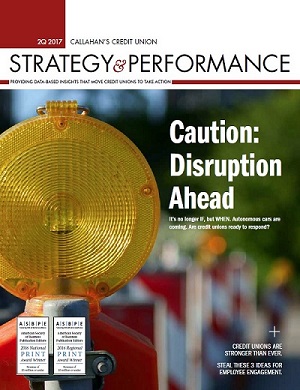Real estate cycles come and go some for the better, some for the worse. But despite the outcome, one thing cycles traditionally have had in common is an emphasis on local.
Past cycles have been location-centric. There’s a boom in Texas or California as the rest of the country muddles along. Florida and New York are on fire; other states are cool. The New York City market collapses, and the rest of the United States plods on.
Even in the previous boom-bust cycle, which seemed national in scope, some states barely felt the boom and were spared the bust, whereas other states were devastated.
In the past couple of years, however, this is not the case. I have observed multiple real estate cycles, but I have not seen one quite like this one.
There are certainly some superstars in the current boom cycle Seattle, the San Francisco Bay Area, New York City, Denver, and Austin, among others but almost the entire country has experienced some form of lift. California’s multiple-offers-over-asking-price trend has become a coast-to-coast phenomenon.
This kind of buyer behavior has been a past harbinger of housing bubbles, which leads to the question: Are we in a real estate bubble?
Make Dwight A TRUSTED Part Of Your Day
Read more insights from Dwight Johnston on TrustCU.com or register for his Daily Dose e-newsletter to receive his blogs straight to your inbox.
Read More Register Now

I say no for several reasons.
First, home prices rise on trend at the rate of inflation. Using the Case-Shiller Home Price Index, home prices nationally are only now approaching the 2006 record. The index in April of that year was 207; it now stands at 198.6. Although prices are up sharply from the index’s 137 low, prices are still below the peak on an inflation adjusted basis.
Second, mortgage debt is also only now approaching the previous record. All traditional measures of mortgage debt payments compared to income levels are at or lower than historical norms.
There’s a huge pool of potential homebuyers. This is the most powerful, long-term, fundamental factor that favors a stable housing market.
Third, there has been a return to normal mortgage standards. Buyers must have income and money for down payments. Plus, homeowners who have bought in the past eight years have built substantial equity. Homeowners have a lot of skin in the game.
Next, the normal process of housing formation during the recession was disrupted as family members moved in with one another. Since the recovery, vacancy rates at apartment buildings have fallen and rents have risen. There’s a huge pool of potential homebuyers. True, not all will become homeowners, but a sizable percentage will. This is the most powerful, long-term, fundamental factor that favors a stable housing market.
Finally, the monster Wall Street created has not risen from the dead. The 2003-2006 housing boom would not have been possible had it not been for the private label mortgage securities market. Wall Street blew apart the normal channels for mortgage creation and securitization, which insured reasonable mortgage standards, and peddled private label mortgage securities around the globe. The more mortgage securities Wall Street sold, the more products investors demanded. With the help of rating agencies, Wall Street winked and nodded at how those mortgages were being made. But the monster destroyed the market. It is dead and gone, and it’s not coming back.
These are my reasons for determining we are not in a housing bubble. However, that doesn’t mean home prices will continue to rise in a straight line to the sky.
Some areas are already starting to flatten as affordability factors come into play. A sharp increase in mortgage rates could end the party in many areas. An economic slowdown would hurt the market. But there will not be the kind of meltdown that destroyed the housing market and almost took down the financial system. Wall Street did such a magnificent job the last time, there is no appetite for a remake.
If you want a bubble to worry about, consider bonds and stocks. If one of these bubbles burst, the Fed will be to blame for that monster but that’s for another article.
Dwight Johnston is the chief economist of the California and Nevada Credit Union Leagues and president of Dwight Johnston Economics. He is the author of a popular commentary site and is a frequent speaker at credit union board planning sessions and industry conferences.

Strategy & Performance 2Q 2017
Credit unions are indeed having an outstanding 2017 right on the heels of a very strong 2016 and 2015. Eliminating barriers and connecting with members distinguishes credit unions from other financial institutions and makes the movement stronger than it’s ever been. Learn what the industry’s most successful credit unions are doing in this issue of Strategy & Performance.
Turns Out, All Real Estate Might Not Be Local
Real estate cycles come and go some for the better, some for the worse. But despite the outcome, one thing cycles traditionally have had in common is an emphasis on local.
Past cycles have been location-centric. There’s a boom in Texas or California as the rest of the country muddles along. Florida and New York are on fire; other states are cool. The New York City market collapses, and the rest of the United States plods on.
Even in the previous boom-bust cycle, which seemed national in scope, some states barely felt the boom and were spared the bust, whereas other states were devastated.
In the past couple of years, however, this is not the case. I have observed multiple real estate cycles, but I have not seen one quite like this one.
There are certainly some superstars in the current boom cycle Seattle, the San Francisco Bay Area, New York City, Denver, and Austin, among others but almost the entire country has experienced some form of lift. California’s multiple-offers-over-asking-price trend has become a coast-to-coast phenomenon.
This kind of buyer behavior has been a past harbinger of housing bubbles, which leads to the question: Are we in a real estate bubble?
Make Dwight A TRUSTED Part Of Your Day
Read more insights from Dwight Johnston on TrustCU.com or register for his Daily Dose e-newsletter to receive his blogs straight to your inbox.
Read More Register Now
I say no for several reasons.
First, home prices rise on trend at the rate of inflation. Using the Case-Shiller Home Price Index, home prices nationally are only now approaching the 2006 record. The index in April of that year was 207; it now stands at 198.6. Although prices are up sharply from the index’s 137 low, prices are still below the peak on an inflation adjusted basis.
Second, mortgage debt is also only now approaching the previous record. All traditional measures of mortgage debt payments compared to income levels are at or lower than historical norms.
There’s a huge pool of potential homebuyers. This is the most powerful, long-term, fundamental factor that favors a stable housing market.
Third, there has been a return to normal mortgage standards. Buyers must have income and money for down payments. Plus, homeowners who have bought in the past eight years have built substantial equity. Homeowners have a lot of skin in the game.
Next, the normal process of housing formation during the recession was disrupted as family members moved in with one another. Since the recovery, vacancy rates at apartment buildings have fallen and rents have risen. There’s a huge pool of potential homebuyers. True, not all will become homeowners, but a sizable percentage will. This is the most powerful, long-term, fundamental factor that favors a stable housing market.
Finally, the monster Wall Street created has not risen from the dead. The 2003-2006 housing boom would not have been possible had it not been for the private label mortgage securities market. Wall Street blew apart the normal channels for mortgage creation and securitization, which insured reasonable mortgage standards, and peddled private label mortgage securities around the globe. The more mortgage securities Wall Street sold, the more products investors demanded. With the help of rating agencies, Wall Street winked and nodded at how those mortgages were being made. But the monster destroyed the market. It is dead and gone, and it’s not coming back.
These are my reasons for determining we are not in a housing bubble. However, that doesn’t mean home prices will continue to rise in a straight line to the sky.
Some areas are already starting to flatten as affordability factors come into play. A sharp increase in mortgage rates could end the party in many areas. An economic slowdown would hurt the market. But there will not be the kind of meltdown that destroyed the housing market and almost took down the financial system. Wall Street did such a magnificent job the last time, there is no appetite for a remake.
If you want a bubble to worry about, consider bonds and stocks. If one of these bubbles burst, the Fed will be to blame for that monster but that’s for another article.
Dwight Johnston is the chief economist of the California and Nevada Credit Union Leagues and president of Dwight Johnston Economics. He is the author of a popular commentary site and is a frequent speaker at credit union board planning sessions and industry conferences.
Strategy & Performance 2Q 2017
Credit unions are indeed having an outstanding 2017 right on the heels of a very strong 2016 and 2015. Eliminating barriers and connecting with members distinguishes credit unions from other financial institutions and makes the movement stronger than it’s ever been. Learn what the industry’s most successful credit unions are doing in this issue of Strategy & Performance.
Daily Dose Of Industry Insights
Stay informed, inspired, and connected with the latest trends and best practices in the credit union industry by subscribing to the free CreditUnions.com newsletter.
Share this Post
Latest Articles
Tech-Grown CEOs Share Fintech Partnership Strategies (Part Two)
Tech-Grown CEOs Share Fintech Partnership Strategies (Part One)
Virtual Cards: More Than Just A Trend
Keep Reading
Related Posts
Markets Responded Well To Reduced Trade Fears In May
What Can Credit Unions Learn From Rocket Mortgage?
Sweeping Tariffs Leave The Fed In An Unenviable Position
Service Credit Union Launches CUSO For Fintech Investments
Savana MorieBest Of 2025 (So Far): Supporting Member Financial Wellbeing
Aaron Passman3 Ways The Balance Sheet Is Adjusting To New Borrowing Habits
Roman OjalaView all posts in:
More on: